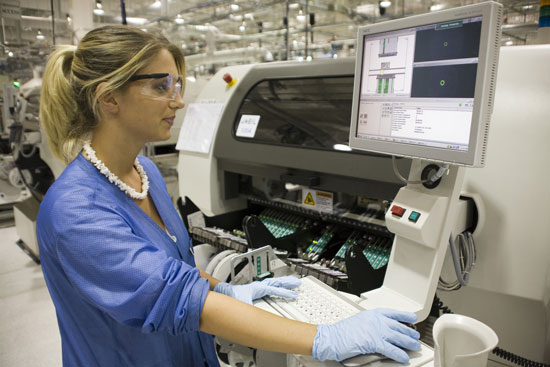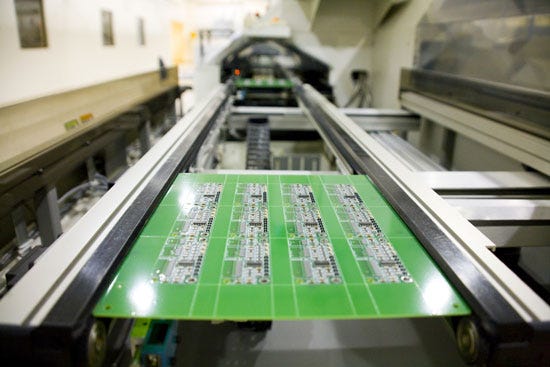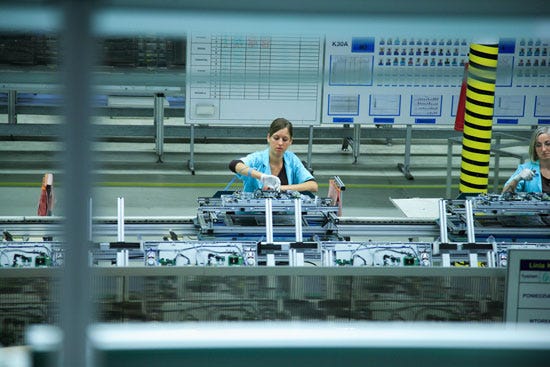Contract manufacturing and design firms are adapting to meet the shifting needs of the medical device industry.
September 20, 2012

Medical device outsourcing is projected to reach $44.7 billion by 2017, according to Global Industry Analysts, Inc.1 The classic motivations fueling this trend—cost reduction and faster time to market—are being reinforced by other advantages offered by increasingly sophisticated design and manufacturing services companies. As devices become more complex, more reliant on specialized information technology, and more widely marketed across the globe, manufacturing services organizations can supply a host of technologies, skills, knowledge, and regional expertise that the OEM may lack. The ability to partner with a design and manufacturing services company on a novel or existing device can free the OEM to concentrate on developing its next product, avoid major capital outlays, and get a head start on going to market in countries or regions outside its area of familiarity.
Although finding a manufacturing partner may seem most beneficial for small or startup device companies that are short on funds, staff, and infrastructure, large firms can use design and manufacturing services companies as an alternative or adjunct to vertical integration. Instead of investing heavily in captive resources, which range from software development teams to specialized testing equipment, larger OEMs can strategically contract out processes or entire projects, increasing their agility in the face of changing regulations, technologies and markets.
Compared to other industries, the medical device sector has been slow to work with design and manufacturing firms, partly due to concerns including loss of control, exposure of intellectual property, inconsistent quality, and inadequate regulatory compliance. Today, design and manufacturing services companies are proving their ability to meet stringent quality and regulatory requirements by successfully taking on highly complex, diverse, and demanding projects. At the same time, tough global competition, increasing cost pressures from insurance companies and legislators, growing demand from emerging regions and new technological advances are prompting device makers to consider working with a manufacturing partner.
Following are some important benefits that device OEMs can gain from partnering with a design and manufacturing services company, as well as a discussion of common concerns and how they are responding to them.
|
Outsourcing firms can help device companies leverage quantities of scale and accelerate time to market. |
Advantages of Partnering with a Design and Manufacturing Services Company
Accelerating Time to Market. Manufacturing partners can help OEMs accelerate time to market for a new product, thus speeding up return on investment. Particularly for low-volume devices, manufacturers may find it cost-prohibitive to hire the experts and purchase the technologies that are required. Because many manufacturing partners already have facilities, staff, equipment, and supply chains in place, they can begin design, optimization, testing, or manufacturing quickly.
When the OEM is targeting international markets, large design and manufacturing services firms can provide an established, local presence in key regions and countries, including already built and scalable manufacturing infrastructure and a network of established suppliers. Replicating such an infrastructure in a new region would require the OEM to invest enormous resources and a minimum of 12 to 18 months of activity.
Another speed advantage a manufacturing partner can offer stems from their extensive knowledge of consumer electronics manufacturing, along with high quality standards, which transfer seamlessly to the medical sector. As more medical devices integrate electronics into their designs, thus becoming hybrid devices, manufacturing partners can supply expertise in circuit board design, user interface creation, data transfer protocols, custom software, and other areas that may be outside the competency of the OEM.
|
Many contract manufacturers are well versed in consumer electronics manufacturing and can share their expertise in that domain with medtech firms. |
Obtaining Specialized Expertise. A design and manufacturing services partner can supply the OEM with specialized knowledge, expertise, and facilities to support a novel application: without the delays and costs of acquiring them in house. For example, OEMs interested in the growing market for combination products, such as drug, electronic and plastic device combinations, may not be set up to handle all of these components. Instead, they can leverage their manufacturing partner’s experience with pharmaceutical formulation, fluid engineering, nanotechnology, specialty plastic molding, and other areas. Further, if a design and manufacturing services firm lacks expertise in a particular area, it usually has a relationship with a partner that does.
With their broad experience designing and manufacturing the latest electronics, design and manufacturing services organizations offer OEMs an invaluable source of knowledge about new technological possibilities for upcoming devices, such as wireless connectivity.
Leveraging a Strong Supply Chain. A complex medical device may call for hundreds of components and materials, each with specific requirements, associated standards and applicable regulations. In particular, the environmental movement has added requirements for reduction of hazardous materials and specific guidelines for disassembly, recycling, and disposal. Many OEMs have neither the supply network nor the expertise to find and manage all these disparate elements.
In contrast, large, global design, and manufacturing services companies typically have robust supply chains that they qualify, strictly monitor and proactively manage on an ongoing basis. Leveraging its partner’s existing supply chain resources helps the OEM streamline production. The manufacturing services partner also can suggest alternative suppliers in case of an interruption. Further, thanks to high purchase volumes, economies of scale and global scope, an OEM’s partner can often drive down costs and optimize supply chain management more effectively than the OEM itself.
Avoiding Issues. Value engineering is another way a design and manufacturing services company can help an OEM avoid future pitfalls such as manufacturing problems or cost issues. The value engineering process involves thoroughly evaluating a device’s design, prototype, components, materials, and processes to pinpoint potential issues and suggest solutions. For example, a team of engineers may review the customer’s bill of materials to identify components that are nearing end of life and find alternatives. The engineers can also look for ways to consolidate parts in order to reduce costs and manufacturing complexity. Manufacturing partners may also be able to suggest alternative suppliers for materials or components offering lower pricing, better service or higher quality. Other value engineering services include review and optimization of key processes so that the device can be tested and produced more quickly and easily.
Similarly, a design and manufacturing services firm’s past work with other medical companies and familiarity with the device development lifecycle can help the OEM avoid mistakes.
Solving Capacity Limitations. Assigning a project to a design and manufacturing services company can act as a seamless extension of in-house manufacturing capability. For example, if another project takes priority, the OEM can quickly transfer an existing product to its partner for the short term or over an extended period. Then, if conditions change, the product can be moved back in house. Such flexibility avoids the need to scale facilities and staff up and down, and makes it easy to balance priorities.
|
Outsourcers can help device companies overcome capacity limitations. |
Answers to OEM Concerns
Although device OEMs often cite worries about regulatory compliance, adherence to quality standards and loss of control as potential roadblocks to partnering with a design and manufacturing services firm, many firms have made major strides in strengthening these areas.
Regulatory compliance. Today’s design and manufacturing services companies typically have extensive knowledge of regulations, standards and best practices that can streamline the art-to-part process and support successful marketing applications. Their work in the automotive and consumer electronics industries has prepared many design and manufacturing services companies to address tough environmental requirements, such as avoiding hazardous materials and simplifying end-of-life device disposal. Some of these companies have built or upgraded clean rooms, developed centers of excellence and other specialized facilities and hired regulatory professionals to help guide them through U.S. and international regulations.
High Quality Standards. The concept of quality has truly become global. All companies engaged in design and manufacturing services are aware of quality expectations and requirements. In most countries with a major design and manufacturing service firm presence, local governments have created regulatory requirements for any medical product based on U.S. Federal Drug Administration (FDA) and ISO 13485 requirements.
Depending on the classification of the product being manufactured by an OEM partner and where it will be marketed, FDA and the European Commission as well as other countries’ regulatory bodies, will exercise oversight by conducting periodic audits of the design and manufacturing services company. In certain countries, regulatory agencies have gone beyond these criteria by adding requirements that a manufacturing services company must meet to obtain a license as a medical manufacturing entity. Some good examples are China’s State Food and Drug Administration, Japan’s Ministry of Health, Labour and Welfare and Brazil’s National Health Surveillance Agency.
In the case of China, the authorities are still in the learning and experimental phase. On one hand, they want to encourage more foreign investments via manufacturing activities to create employment. On the other, they want to ensure the validity of a firm’s manufacturing operation. They also want to uphold the famous FDA standards of “safety” and “adequacy.” China has some of the most stringent rules regarding product safety.
To address these issues, globally competitive design and manufacturing services companies have proactively implemented rigorous employee training programs, automated manufacturing processes and, and advanced quality planning. Further, many manufacturing partners take the time to translate manufacturing procedures and training materials into local languages to ensure employees are well trained in customer requirements. They may also provide visual aids to ensure personnel at all levels down to the manufacturing floor are able to understand and follow the instructions.
Another approach used to alleviate human error and avoid quality issues is automation. Such state-of-the-art manufacturing equipment is fully validated to ensure repeatability of the process. In most cases, the cumulative first pass yield target is set higher than 95%. Once this target is met, it is upgraded periodically. If the target is not met, trigger mechanisms trend the performance and prompt action plans to get back on track.
New product introduction, quality and manufacturing plans help ensure customer requirements for quality and regulatory compliance are fully implemented and incorporated into design or manufacturing processes. In addition, top manufacturing partners implement design failure mode and effects analysis, process failure mode and effects analysis and control plans for each customer process to ensure it fully aligns with quality/regulatory standards and requirements.
Customer requirements are communicated during contract negotiations along with quality and manufacturing plans via a quality assurance agreement. This document is created to ensure all requirements, roles and responsibilities are translated into actual manufacturing processes by the manufacturing partner. OEMs have the right to audit their partner to ensure full compliance.
Oversight. Large design and manufacturing services companies typically have a global footprint with engineering and manufacturing locations spread all over the globe. This makes it easy for such firms to support and interface with OEM customers, not only at their headquarters in the United States, Europe, or another location, but also at offshore sites. This geographical proximity fosters close collaboration and gives the customer a greater level of control.
Recently, many medical device companies have begun to establish design and new product introduction sites in China. The local presence of many large design and manufacturing services organizations in China allows a high degree of customer oversight and also boosts efficiency.
The typical method for collaboration between the manufacturing partner and device maker is a regular schedule of joint project meetings, business reviews, and technical meetings. In many cases it makes sense to place engineers of the manufacturing services firm on site at the customer’s premises for a couple of weeks to kick off the project and set up a good relationship. Once the engineers become familiar with the customer’s product and requirements and both teams are well acquainted, working remotely is much easier.
In some cases, such as when there are multiple products and/or process changes, or when a project requires intensive and immediate communications, design and manufacturing services companies have found it appropriate to embed a small team of engineers at the customer’s premises on an ongoing basis. This may also be arranged to facilitate the transfer of a product to the manufacturing partner.
In addition to integrating teams through face-to-face collaboration, it has become daily practice to work in a virtual environment. Technologies including Web conferencing, video conferencing, data rooms, and online authorization tools are increasingly important for enabling device manufacturers to retain control when using a design and manufacturing company.
Conclusion
Working with a manufacturing partner can provide measurable benefits to device OEMs of any size, including speed to market, specialized expertise, flexibility and regional knowledge. To allay concerns about regulatory and quality issues, OEMs should ensure that their manufacturing partner can demonstrate compliance with healthcare and environmental regulations, a strong quality assurance program and a willingness to collaborate and communicate throughout the relationship.
References
Global Market for Medical Device Outsourcing Services to Reach US$44.7 Billion by 2017, According to a New Report by Global Industry Analysts, Inc. (Available from Internet: http://www.sfgate.com/cgi-bin/article.cgi?f=/g/a/2011/10/06/prweb8853401.DTL&ao=all)
Craig Neita is senior director of corporate development and technology, Jabil Healthcare & Life Sciences (Saint Petersburg, FL).
Moe Khosravi, senior director of quality & regulatory compliance, Jabil Healthcare & Life Sciences (Saint Petersburg, FL).
You May Also Like




